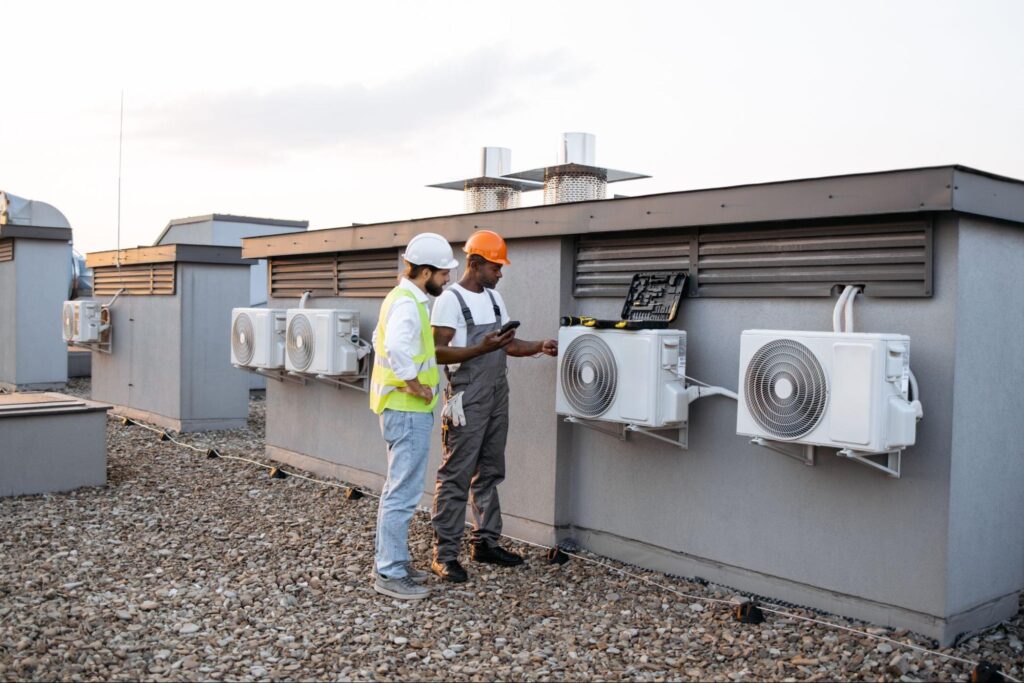What to Know Before Scheduling a Heating Installation for Your Home
What to Know Before Scheduling a Heating Installation for Your Home BrandRep 2:45…

Getting the right system matters, but how it’s installed matters more. A brand-new high-efficiency furnace or heat pump can underperform for years if ductwork is leaky, airflow is off, or refrigerant charge is wrong. That’s why a professional HVAC installation service is really a process—not just a delivery and hookup. The steps below show how design, setup, and commissioning turn equipment specs into real comfort, lower bills, and longer system life.
The first step is sizing the system to the home, not guessing from nameplates or copying the old unit. A proper load calculation considers square footage, window area and orientation, insulation levels, air leakage, and local design temperatures. When a contractor completes this analysis, they right-size capacity so the equipment runs steadily, removes humidity effectively, and avoids short cycling. Oversized systems waste energy and wear out faster; undersized setups struggle in extreme weather. A thorough HVAC installation service uses recognized methods for heating and cooling loads, so efficiency is baked in before a single part is ordered.
Ducts are the arteries of the system. If they’re leaky, undersized, or poorly routed, even the best equipment can’t breathe. Correct layout, friction rate, and total effective length determine how quietly and efficiently air moves to every room. Thoughtful HVAC installation service means the plan is tailored to real pressure losses and room-by-room airflow targets, rather than simply “whatever fits.”
High static pressure forces blowers to work harder and burn more electricity.
Mastic and mesh—not duct tape—keep conditioned air in the ducts and out of the attic.
Adequate return pathways prevent pressure imbalances that drive infiltration.
Efficiency lives in the match between capacity and control. Two-stage and variable-speed systems can sip energy at low speeds for long, quiet cycles, then ramp up only when weather demands it. The installer’s role is to pair equipment with compatible air handlers, proper coils, and control boards that actually use those features. When a HVAC installation services lines up components as a system, you get smoother temperatures, better dehumidification, and fewer spikes on the power bill. The right refrigerant coil, blower size, and controls are not extras—they’re the path to converting lab-rated efficiency into everyday results.
Energy efficiency and indoor air quality are not opposites. A tight, well-sealed house needs managed ventilation to bring in fresh air without throwing away heating and cooling. Filters need to capture particulates without obstructing airflow. Humidity has to sit in the sweet spot for comfort and health.
Mechanical ventilation supplies controlled fresh air while protecting comfort.
A higher MERV is good only if the system can handle the added resistance.
Right-sized latent capacity reduces mold risk and stops that clammy feeling.
Your equipment doesn’t live in a vacuum—it interacts with walls, windows, and insulation. A thoughtful HVAC installation service starts by asking how tight the house is and whether low-cost envelope fixes can reduce the required tonnage. Air sealing, attic insulation, and shade strategies can shrink peak loads, allowing smaller equipment that runs longer, quieter cycles at lower cost. That partnership between envelope and mechanicals amplifies every kilowatt you buy, turning efficiency into a whole-home outcome rather than a single line item on an invoice.

Performance depends on precision. Refrigerant lines must be sized and routed correctly, brazed cleanly, and insulated to prevent sweating and energy losses. The final charge should be verified under real conditions, not guessed. Airflow across the coil needs to meet manufacturer targets so heat exchange is efficient and quiet.
Clean brazes and proper line sizing protect compressors and capacity.
Weigh-in plus superheat and subcool checks lock in performance.
Static pressure and delivered CFM are measured, not assumed.
Controls determine how your system operates on a day-to-day basis. Smart thermostats, room sensors, or zoned dampers can keep temperatures even and reduce run time, but only if they’re configured as a cohesive plan. Commissioning is the proof: the installer documents airflow, temperatures, pressures, and staging so results match the design intent. Without this step, efficiency is theoretical; with it, efficiency is verified.
Features like adaptive recovery and staging must be enabled and tuned.
Properly sized bypass-free designs avoid wasted energy and noise.
Numbers on paper confirm that comfort and efficiency were achieved.
Energy performance declines when filters clog, coils get dirty, or drains back up. A strategic HVAC installation service anticipates maintenance with accessible filter racks, service clearances, and drain protection like cleanouts and float switches. It also selects materials—UV-resistant drain lines, corrosion-resistant fasteners, quality pads—that hold up in your climate. These small decisions help maintain efficiency and prevent nuisance calls that waste energy and money. A well-planned system is easier to stay in tune, and a tuned system always uses less energy.
What delivers efficiency in Phoenix differs from what it does in Portland or Pittsburgh. Climate sets the priorities for latent removal, heat recovery, or cold-weather performance. A region-aware HVAC installation service designs for those realities so you aren’t paying for features you don’t need—or missing ones you do.
High ventilation rates with sensible cooling and durable outdoor coils shine here.
Low-ambient capacity, proper backup heat sequencing, and defrost strategy are key considerations.
Long run times at low speed and tight ducts are essential for moisture control.
When heat pumps or high-efficiency gas systems share space with water heaters, there’s an opportunity to recapture waste heat or manage venting and combustion air safely. Heat pump water heaters can lighten summer cooling loads by dehumidifying the space; combi-boilers need carefully sized hydronic coils and circulators to hit design temperatures without short cycling. The installer’s job is to coordinate these pieces so one appliance doesn’t sabotage the other’s efficiency. A coordinated HVAC installation service treats mechanical rooms as systems, not as a collection of separate boxes.
Quiet is a form of efficiency—you run systems longer at low speeds without noticing them. Properly isolated line sets, anti-vibration pads, balanced blowers, and thoughtful return placements turn the whisper into the default mode. If ducts boom or registers whistle, airflow is likely wrong, and wrong airflow wastes energy. By solving the acoustics during setup, an HVAC installation service locks in both comfort and a lower utility profile.
If you’re planning to move away from combustion appliances, the design needs to account for panel capacity, circuit routing, and cold-weather heat pump performance. Load calculations determine whether you need service upgrades; defrost and backup strategies prevent mid-winter surprises. Ducted and ductless combinations can target stubborn rooms while keeping whole-home efficiency high. With a staged roadmap, electrification becomes a set of coordinated upgrades rather than a disruptive overhaul, and each step delivers measurable savings.
Sticker price is not the same as operating cost. An efficient system that’s designed, installed, and commissioned well often carries a lower lifetime cost than a cheaper unit installed poorly. Lower utility bills, fewer repairs, and longer equipment life stack the math in your favor. Rebates and tax incentives can improve the equation further, but only if the installation meets required specs. A rigorous HVAC installation service is what turns incentives into cash you actually keep.

A few precise questions reveal whether you’ll get performance or just hardware. Ask how loads are calculated, how ducts will be tested, and what measurements will be captured at startup. Look for answers that include numbers, tools, and a commissioning checklist rather than vague promises.
You want documented loads, duct design, and equipment selection that match each other.
Expect a plan for leakage testing and static pressure measurement.
Airflow, temperatures, pressures, and staging should be verified and recorded.
Additions and remodels change airflow paths and loads, so tying a new room to an old trunk line often creates hot and cold spots. The efficient approach is to revisit the entire distribution plan: sometimes a dedicated ducted mini-split or a short new trunk with its own return outperforms a forced compromise. An attentive HVAC installation service treats these projects as new designs, ensuring the central system’s efficiency isn’t dragged down by a poorly integrated space.
Energy savings improve when controls match your lifestyle. Geofencing, occupancy sensors, and room-level temperature averaging can reduce run time without sacrificing comfort. But smart features only work if they’re mapped to the equipment’s capabilities. The installer should configure lockouts, staging thresholds, and fan profiles so the tech serves the design—not the other way around. Done correctly, the smart layer becomes the invisible hand that trims energy use hour by hour.
In the end, efficiency is the byproduct of good fundamentals: accurate sizing, tight ducts, correct charge, verified airflow, appropriate controls, and clear documentation. When each step is handled with craft and measured with instruments, your home runs on a steady, quiet baseline that wastes less and lasts longer. That is the promise of a well-executed HVAC installation service—comfort you can feel and bills you barely notice, season after season.
Visit our Cantrell’s Heating & Air Conditioning blog to learn more about HVAC installation service.
What to Know Before Scheduling a Heating Installation for Your Home BrandRep 2:45…
How Air Conditioning Services Improve Indoor Air Quality BrandRep 2:45 pm no comments…
Can WiFi Thermostats Extend the Life of Your HVAC System? BrandRep 2:45 pm…